After last night's frenzy while I was basically taking my room apart to find my track pants (which is still MIA), was kinda in an un-excited frame of mind when I woke up this morning for the trip. Considering the pre-dawn meeting time, the entire bunch of us were rather chirpy albeit a little nonsensical with our brain (synapses?) not fully functioning yet.
No photos for now since I am slow in my photo processing flow TT_TT But I thought I would just quickly post up some thoughts about my first time doing an intertidal on a patch reef ^^ (Especially since the rest are churning out their picture/video packed entries one after another!) Have been hearing and reading quite a bit about the Cyrene reefs, from lab seniors and fellow volunteers, and she certainly hasn't failed to deliver. From when we were still on the boat, waiting for the smaller boat to fetch the 2nd batch of us over to the landing area at the sandbar, a (eagle?) ray just leaped out of the water! It was one of those split-second-suspended-in-time kinda thing. Happened so fast yet so clearly! Seems like Cyrene was welcoming us back to her shores!
Told CH that I wanted to see the Melibe sp. opisthobranch, and she promptly spotted one and hollered for me. *yay* Having seen one in real life, I managed to spot a smaller one all by myself too! While making my way over to the Melibe sp., was distracted by the many many knobblies (Protoreaster nodosus), and Kenneth even spotted one that looked like a uberly pale version of the Pentaceraster mammillatus aka evil star that was in the news recently. Though after showing the photos around and some discussion, this pale yellow one may turn out to be yet another species! Dr Lane has been contacted, and we eagerly await his response to this unique star we saw. Too bad none of the dark "evil" P.mammillatus were seen.
There's another trip out tomorrow while I'm out on a dive and I hope they would see even more things that they can share with us ^-^ I will try to put up a more detailed entry with photos some time soon! Stay tuned!
EDIT:
this divejunkie of a fish is stuck at Semakau landfill for most of the weekend (and yes, I do mean MOST since it's an overnight), likely to be back with even more photos *geh* so the proper Cyrene blog entry and photos would only appear late next week after I do a summary of the Sedili weekend... Gomen-nasai for being so slow with the photos....
No photos for now since I am slow in my photo processing flow TT_TT But I thought I would just quickly post up some thoughts about my first time doing an intertidal on a patch reef ^^ (Especially since the rest are churning out their picture/video packed entries one after another!) Have been hearing and reading quite a bit about the Cyrene reefs, from lab seniors and fellow volunteers, and she certainly hasn't failed to deliver. From when we were still on the boat, waiting for the smaller boat to fetch the 2nd batch of us over to the landing area at the sandbar, a (eagle?) ray just leaped out of the water! It was one of those split-second-suspended-in-time kinda thing. Happened so fast yet so clearly! Seems like Cyrene was welcoming us back to her shores!
Told CH that I wanted to see the Melibe sp. opisthobranch, and she promptly spotted one and hollered for me. *yay* Having seen one in real life, I managed to spot a smaller one all by myself too! While making my way over to the Melibe sp., was distracted by the many many knobblies (Protoreaster nodosus), and Kenneth even spotted one that looked like a uberly pale version of the Pentaceraster mammillatus aka evil star that was in the news recently. Though after showing the photos around and some discussion, this pale yellow one may turn out to be yet another species! Dr Lane has been contacted, and we eagerly await his response to this unique star we saw. Too bad none of the dark "evil" P.mammillatus were seen.
There's another trip out tomorrow while I'm out on a dive and I hope they would see even more things that they can share with us ^-^ I will try to put up a more detailed entry with photos some time soon! Stay tuned!
EDIT:
this divejunkie of a fish is stuck at Semakau landfill for most of the weekend (and yes, I do mean MOST since it's an overnight), likely to be back with even more photos *geh* so the proper Cyrene blog entry and photos would only appear late next week after I do a summary of the Sedili weekend... Gomen-nasai for being so slow with the photos....







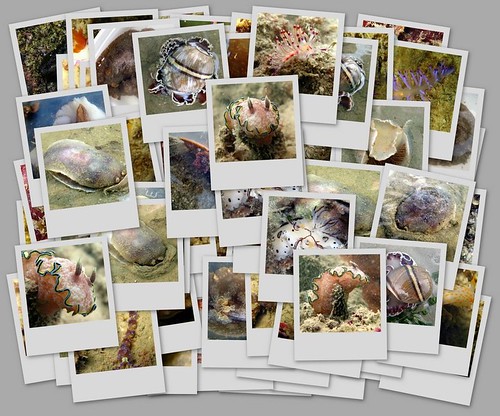
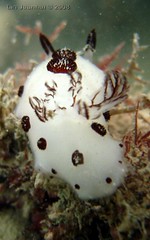

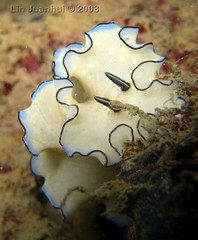
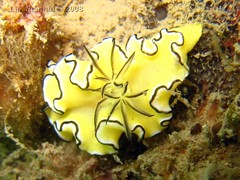

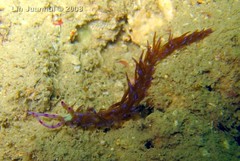
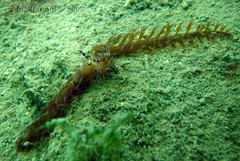
![IMG_0399 blue dragon [Pteraeolidia ianthina]](http://farm3.static.flickr.com/2208/2317787570_5467d1b96b_m.jpg)
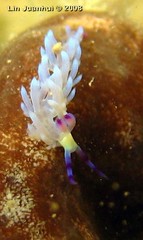
![IMG_0378 juv blue dragon [Pteraeolidia ianthina]](http://farm3.static.flickr.com/2332/2317786996_9d4ecf1e52_m.jpg)
